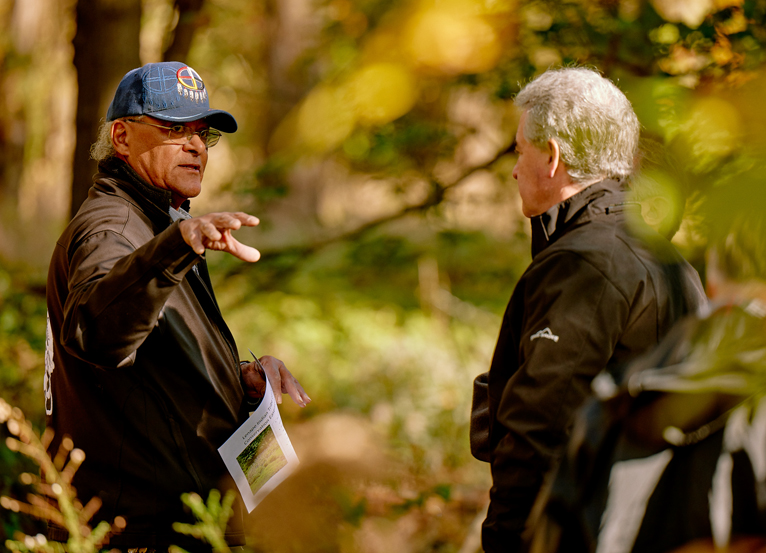
Facebook Twitter Instagram YouTube RSS Feed
Written on: March 13th, 2024 in Outreach
By Olivia Allread, DNREC’s Wetland Monitoring and Assessment Program
Time is ticking when it comes to protecting and conserving our precious resources in Delaware. From the 90 miles of coastline to the forested areas on the western side of the state, all three counties have diverse habitats which provide a myriad of benefits free of charge to us humans. Today many Delawareans value wetlands and open space for their beauty, wildness, and many ecological benefits. To be sure these crucial habitats are not lost or degraded in the future, conservation efforts need to steadily continue. But not every citizen is “in-the-know” about the conservation efforts being encouraged by many organizations and government entities. So for this blog installment, we wanted to look at several of the victories in wetland and land conservation in Delaware to help spread the word.
Milford Neck Nature Preserve
On the southeastern edge of Kent County lies a nature preserve like no other. Milford Neck Nature Preserve is owned and managed by a combination of entities, as well as private individuals all working towards a greater cause. Wetland restoration being one of them! Tidal marsh, beach, coastal and upland forest, and agricultural lands make up the area, and the preserve itself is the only remaining forested area greater than 1,000 acres on the entire coast of Delaware. It also provides support for a wide variety of species and habitats, such as migratory waterfowl and spawning horseshoe crabs. The Milford Neck land holdings, including the areas owned by state of Delaware, Delaware Wild Lands, and The Nature Conservancy, form a block of 10,000 acres of protected land and nearly 10 miles of undeveloped bayshore that extends from the Mispillion River north to the Murderkill River. This significant land holding offers vital habitat preservation and is a noteworthy accomplishment of mosaic landscapes.
Greenly Property
A solid win for wetlands was the 98 acres purchased in February of 2022 to expand Killens Pond State Park and help protect the corridor between Killens Pond and Browns Branch. The forested wetlands on this property provide crucial habitat for the federally-listed endangered plant species Swamp Pink (Helonias bullata). As an obligate wetland species, it occurs along streams and seepage areas in freshwater swamps and other wetland habitats.
Expanding State Wildlife Areas
As a previously used Bird-a-thon location, the Cataldi Property is a lovely combination of forested wetlands, marsh, and wildflowers. This 166-acre area was purchased in August of 2022 by the Delaware Open Space Program and is located in northeastern Kent County. The acquisition expanded the Tony Florio Woodland Beach Wildlife Area near Smyrna with hopes that the forested wetlands, including freshwater ponds, will be successfully maintained.
In order to expand and connect the two tracts of the Eagles Nest Wildlife Area, four more acres of forested wetlands were acquired in New Castle County from the Duffy Property. As well as a another very recent addition that includes the Sandom Branch Tract. DNREC’s Conservation Access Pass is required to access Division of Fish and Wildlife areas such as these, and permitted hunting opportunities are available. Remember – hunting it an important part of habitat management and conservation.
Heading down south to the Shockley Property in Sussex County, this land acquisition added another 13 acres to the Assawoman Bay Wildlife Area. What is unique about this site is that the land was provided via donation, a major partnership win between the landowner and DNREC to protect tidal marshes in the Assawoman Bay. This over 3,000-acre wildlife area is a popular for raptor birds, boaters, woodpeckers, hunters, and is even home to a living shoreline!
Native Lands in Delaware
The state-recognized Nanticoke Indian Tribe and the Lenape Indian Tribe of Delaware have long sought to reacquire some of their ancestral lands for education, agriculture, and traditional uses. These tribes called our region home for well over 10,000 years and practiced environmental stewardship before it was even thought of. For many decades, the Nanticoke Indian Tribe only owned 1-acre of ancestral land and had no other property for tribal functions. In 2021, when 31 acres adjacent to their historic land came up for sale, three entities came forward to assist the Tribe with acquiring the land. The state of Delaware’s Open Space Program, Mt. Cuba Center, and The Conservation Fund joined forces to restore property ownership to the tribe and created a conservation easement that protects it from future development. Most recently, in June of 2022, The Lenape Conservation Easement was established on 11 acres in Kent County to protect lands adjacent to Fork Branch Nature Preserve. In addition to the land donated, The Conservation Fund also donated the ownership rights to the Lenape Indian Tribe of Delaware.


Who is Doing the Work
Many entities have their hands in the honey pot of these success stories and are making strides to continue conservation in Delaware. The Delaware Open Space Program plays a vital role in the acquisition and management of many of these natural and cultural areas. DNREC, the Delaware Forest Service, the Delaware Division of Historical and Cultural Affairs, and the Delaware Open Space Council are involved with the program and long-term success of said landscapes. Another notable player is The Nature Conservancy (mentioned previously), who have acquired and protected over 31,000 acres of land since 1990. In particular, their commitment to the Delaware Bayshore and wetlands helps spread the word on the importance of coastal protection and resiliency. The Delaware Nature Society is carefully managing habitats throughout the state with biodiversity in mind. Whether it be bird conservation or soil and food production, this non-profit is ensuring a thriving diversity of our land, plants, and animals. This list can go on!
Seeing the progress of conservation efforts made is a key step in better understanding how to continue it in the future. Sharing lessons learned, securing dedicated funding, researching management practices, providing outreach and education – all these play a part in how we will carefully maintain and upkeep Delaware’s natural and cultural resources to prevent them from disappearing. Our DNREC wetlands program is more than proud to not only see some of these extraordinary habitats or locations, but have a small hand in protecting them for citizens and nature alike. As Delawareans, you too can have an impact on how conservation continues in the first state. Purchase food from a regenerative farm, attend a local tribes annual Powwow, take a stroll in a nature preserve you’ve never been too, donate land or enroll in a conservation easement. What role will you play in it all?
“We abuse land because we regard it as a commodity belonging to us. When we see land as a community to which we belong, we may begin to use it with love and respect.”
– A Sand County Almanac, Aldo Leopold